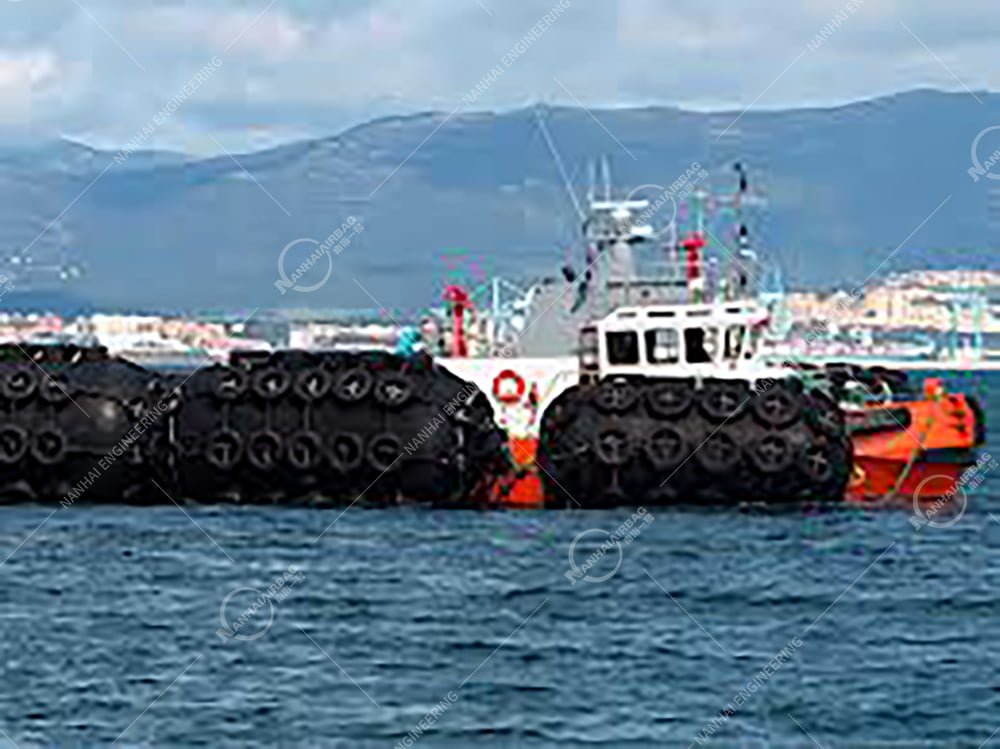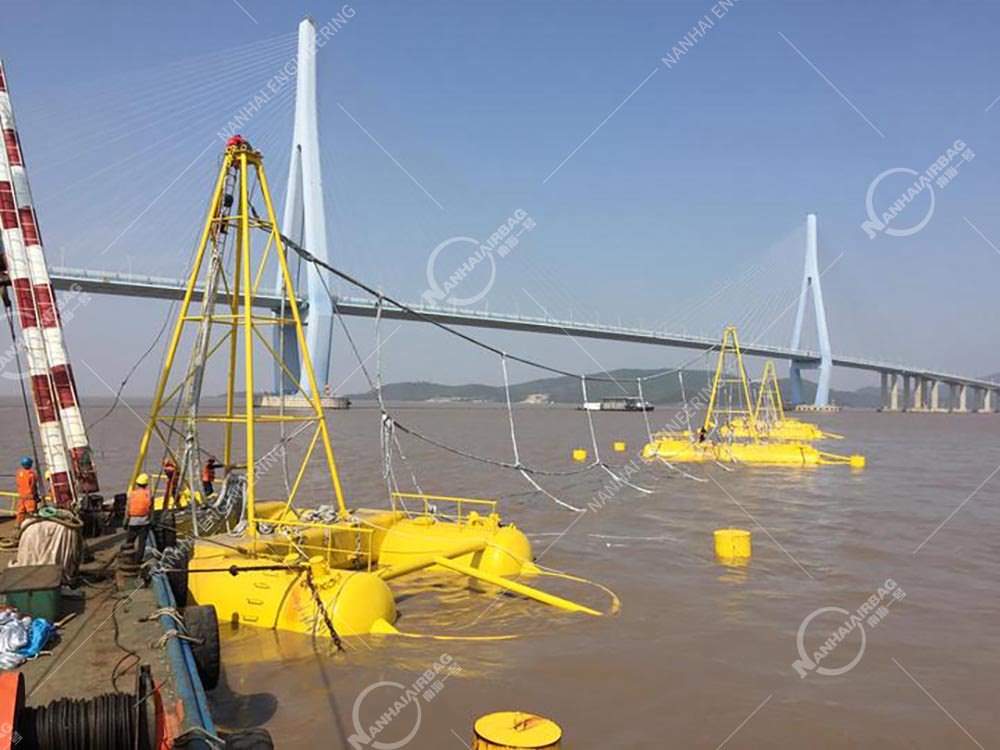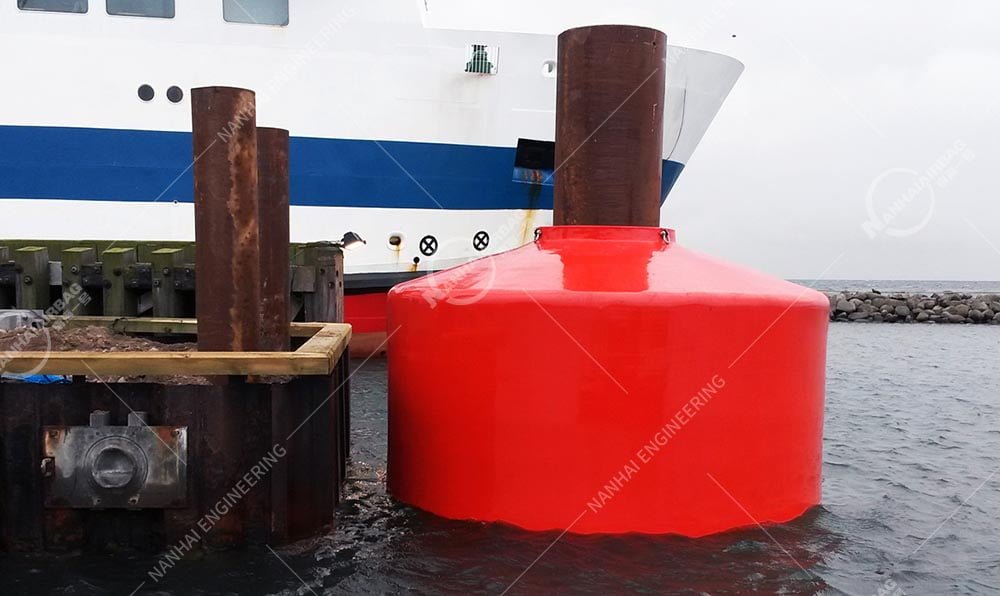Learn more about NANHAI Foam Filled Fenders: the leader in the global market
02/08/2024Yokohama Pneumatic Rubber Fenders’ Plan for Ship-to-Ship in Indonesia
09/08/2024NANHAI Protects your boat and dock(important and affection of boat collision avoidance system)
Whether you own a small boat, a large yacht, a big ship or operate a busy marina(dock, wharf,unloaded), choosing the right collision avoidance marine equipment can effectively prevent collision damage and extend the life of your boat and dock . In this article, we will introduce the importance and affection of the collision avoidance system from five aspects, and involve the effects of the NANHAI company(China Marine equipment manufacturer, China's largest supplier of Marine equipment) equipment used by various countries. If you want to look up a place quickly, click on the table of Contents.
important and affection of boat collision avoidance system catalog
显示HideSecure boat and dock facilities
In Southeast Asia, between the Indian Ocean and the Pacific Ocean, Indonesia, as the world's largest archipelagic country, has a number of important ports and shipping hubs. However, during the annual typhoon season, especially when storms hit frequently, port managers and ship operators face huge security challenges. Recently, a large port in Indonesia in Southeast Asia was hit by a powerful storm, which had a nearly catastrophic effect on its operations.

In this storm, a cargo ship with a large cargo load unfortunately encountered the impact of wind and waves, threatening the safety of approaching the dock. Fortunately, however, the port has long been equipped with NANHAI's advanced marine fenders: fixed foam fender, yokoham pnuematic fender, these marine floating fenders are more than simple embellishments, they are designed to provide critical protection and safety in similarly harsh weather conditions.
These mainre boat fender and dock fender are different from ordinary coastal protection devices in that their special materials and construction enable them to effectively absorb and disperse collision energy, thereby protecting dock facilities and ships from serious damage. In this case, the NANHAI marine floating rubber fender and high-quality foam fender successfully mitigated the impact of the cargo ship due to wind and wave impact, avoiding serious damage to the Indian terminal facilities and possible injury to personnel.
This successful protection is not only due to the design and material selection of the crash pads, but also demonstrates the great attention and careful planning of the port management in India and the quality management of the boat fenders and dock fender products by NANHAI company. Their cooperation and decision-making ensured that the port remained relatively smooth during the storm, protecting vital trade and logistics routes. Among them, NANHAI products play a very important role.
As a major global maritime and trade hub, Indonesia's port security is of Paramount importance. In the face of the challenges of the typhoon season, NANHAI's rubber fender quality and high technology foam fender products demonstrate their indispensable role in protecting terminal facilities and ship safety. Through continuous technological updates and security measures, Indonesia's ports will continue to play an important role in the global shipping network, providing stable and reliable support for trade and economic development.
Reduce accidents and losses
In well-known European port cities such as Rotterdam (Netherlands), Anwerp-Bruges (Belgium), Hamburg (Germany)and Valencia (Spain), the buoyage system and dock fender play a vital role in high volume vessel traffic times nightly and in the morning. NANHAI offers dock fenders and boat fenders in different sizes and dimensions as well as navigational signs such as lighthouses and buoys.

As an important hub for European and global trade, these ports welcome a large number of ships in and out every day. In such a high-frequency and busy transportation environment, navigation safety becomes a top priority. Navigational signs such as lighthouses and buoys are precisely positioned around waterways and harbors, and not only do they stand out during the day, but their bright light at night and in bad weather also provide a reliable navigational reference for ships. The presence of these signs greatly reduces the risk of collisions and accidents as vessels become disoriented or miss the correct course in hazy visibility conditions.
At the same time, NANHAI marine fenders are cleverly placed around the docks and at the entrance to the waterway as a substantial protection measure. They are designed to take into account the various challenges a ship may face during berthing, launching and sailing. These piles not only provide a physical barrier to prevent ships from accidentally colliding with port buildings or other vessels, but also stabilize the navigation path, ensure the safe passage of ships through busy shipping lanes, and protect the property safety of docks and boats.
Through the optimized and precise placement of navigation facilities, these European port cities demonstrate their superior port management and technical capabilities. Guided by these facilities, ships can enter and exit ports efficiently and safely, not only improving transport efficiency, but also significantly reducing the risk of accidents and cargo loss. These measures are not only to meet safety standards, but also to safeguard the port's reputation and long-term sustainable development.
Types of NANHAI marine yokohama fender include hydro pnuematic fenders, tire type pnuematic fenders, sling fenders, etc. Each is optimized for its specific application needs in the port environment. Not only that, we can also customize the corresponding color and size of yokohama fender. These products not only provide the necessary physical isolation between the ship and port facilities, but also effectively reduce the risk of cargo loss and structural damage that may result from collisions.
Therefore, navigation signs and marine fenders for dock, as key port security facilities, not only play an important role in these busy port cities in Europe, but also provide valuable experience and reference for major ports around the world. Their existence is not only NANHAI's innovation in technology, but also NANHAI's effective commitment to the protection of ships and port property, ensuring the robust operation and sustainable development of the global shipping industry.
Marine protective rubber products are widely used in various key locations in ports, such as dock edges and channel entrances. They effectively protect port facilities and the ship itself from damage by absorbing and dispersing energy during berthing, setting sail and berthing. The design and material selection of these rubber products take into account the needs of different ship sizes and weights, ensuring their stability and reliability in a variety of tidal and weather conditions.
Improve port efficiency
At a large container port in North America, There are a variety of NANHAI's Marine engineering key products such as floating fender, Yokohama fender and foam-fixed fender that play an important role. Help large container ships berthing and deberthing safely and efficiently.
These protective rubber products are more than simple physical isolation devices, their design and material selection take into account various factors in the port environment, such as tides, wind waves and ship size. Through its soft but robust construction, the floating protective rubber is able to effectively absorb and disperse the energy of the ship during berthing and docking, reducing the risk of collision with dock facilities or other vessels.
Yokohama rubber pnuematic fender is known for its highly reliable performance, providing excellent shock absorption and long-term durability through its inflatable design and high-quality rubber material. This design not only protects the hull of the ship from damage, but also guarantees the safety and stability of the port facilities.
Foam-filled fender is another innovative product that is filled with a special foam material that is both lightweight and provides effective cushioning in the event of a collision. This design not only reduces the weight of the protective rubber itself, but also improves overall operational efficiency and safety.
In addition to rubber fender, advanced port management systems and technologies are also key factors in enhancing the efficiency and safety of port operations. Automated berthing systems, real-time monitoring technology and remote operating systems all provide accurate navigation and operational support for ships entering and leaving ports, reducing the incidence of human error and accidents.
As a result, the combination of Marine engineering products and technologies provided by these NANHAI companies not only improves the operational efficiency of large container ports in North America, but also sets a new standard for port safety management worldwide.

Meet legal and regulatory requirements
Globally, the International Maritime Organization (IMO) plays a key role, especially in the process of building, registering and regularly inspecting large ships. Every time a ship is built and registered, as well as during regular inspections, ship and port managers must comply with the strict regulatory requirements set by the IMO to ensure that all ships are equipped with collision avoidance equipment that meets the standards.
IMO's regulations and standards are designed to safeguard safety and environmental standards for shipping worldwide. These regulations require ships to be equipped with high-quality collision avoidance equipment, including various types of collision avoidance rubber products such as floating rubber, Yokohama rubber and foam rubber. These devices can not only effectively reduce the occurrence of collision accidents, but also reduce the risk of environmental pollution and protect the sustainability of the Marine ecological environment.
IMO regulations do not only apply to new ships, but also cover regular inspection and renewal requirements for existing fleets. Through strict enforcement of these regulations, IMO ensures the highest levels of safety and environmental performance when sailing in global waters. This global unified standardized management not only improves the overall safety level of ship operations, but also lays a solid foundation for the sustainable development and progress of the global shipping industry.

Protect the environment

In Singapore, an environmentally sensitive region in southeast Asia, NANHAN's highly efficient collision avoidance systems play a key role in preventing oil spills and other pollutant releases from collisions between ships and port structures every time a ship berthing and departs.
As an important international trade and shipping centre, Singapore's coastal cities face special environmental challenges and responsibilities. The docking and departure of ships is not only a commercial activity, but also an important part of environmental protection. To protect the health of the surrounding Marine ecosystem and coastal areas, NANHAN designs and supplies advanced Foam fender systems specifically designed to minimize the impact of collisions on the environment.
Collision avoidance equipment plays a key role in the berthing and departure process, its main function is not only to protect the structural safety of ships and port facilities, but also to prevent the release of oil spills and other harmful substances caused by accidental collisions. NANHAN's collision avoidance systems are typically made of energy-absorbing, durable materials that effectively absorb and disperse collision energy, thereby reducing the potential impact of an accident on the surrounding environment.
Singapore's collision avoidance system is not only a technological innovation, but also a substantial contribution to environmental protection. By adopting these advanced protective measures, NANHAN and the Singapore government have jointly protected their precious coastal ecosystems, while setting an important example and standard for other similarly environmentally sensitive areas around the world. This comprehensive approach to environmental protection not only helps to maintain ecological balance, but also promotes sustainable development, reflecting NANHAN's leadership and responsibility in the field of global environmental protection.
Therefore, NANHAN, through its cooperation with Singapore, has achieved a win-win situation for ship operations and environmental protection while protecting the environment, injecting new impetus and hope into the future sustainable Marine engineering and shipping industry.
More video
